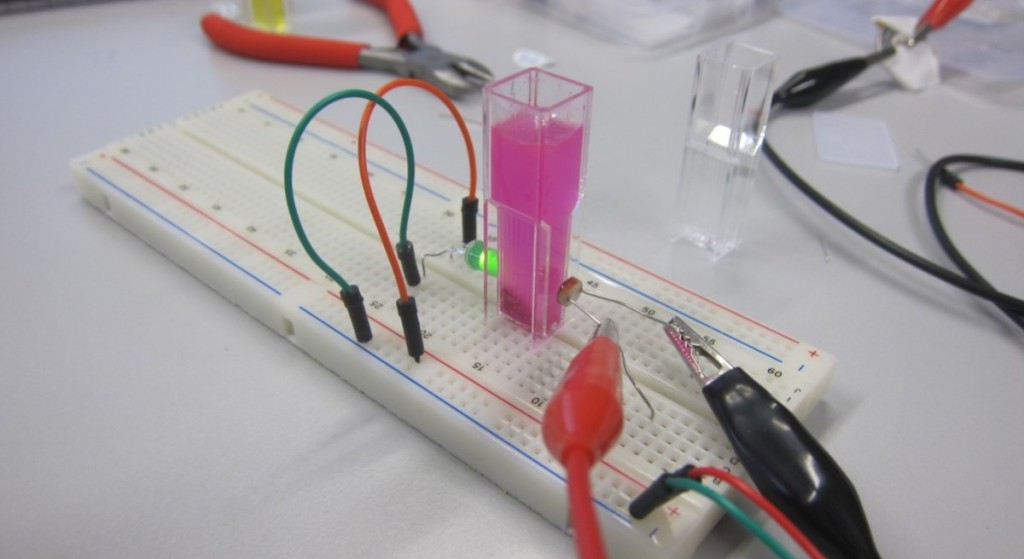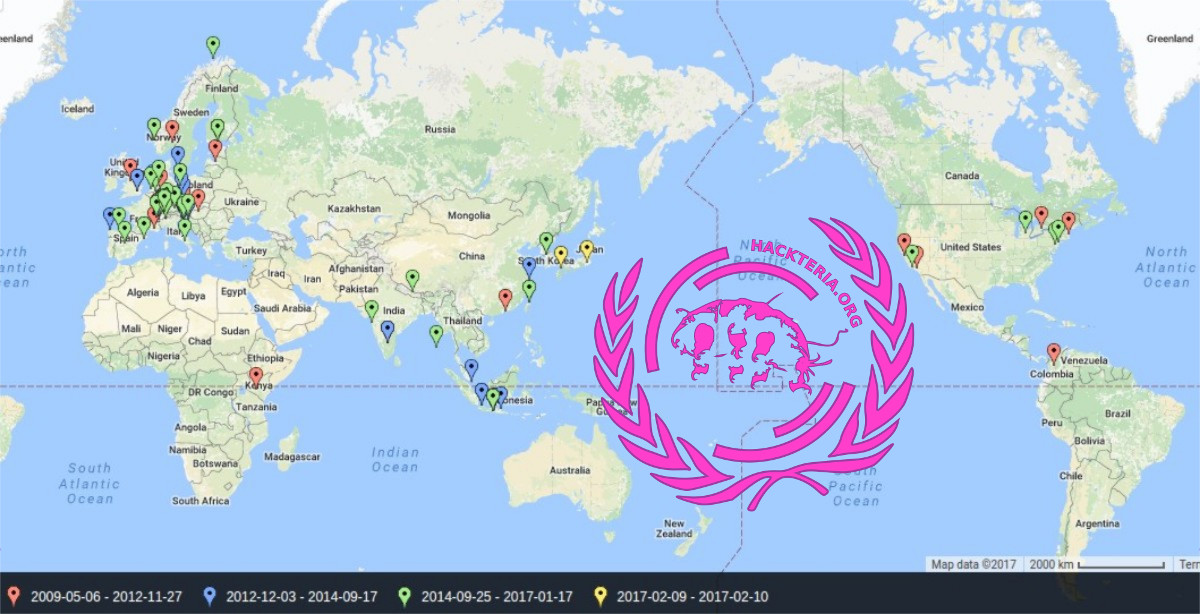 DIY in bioanalytics: doing and grasping it yourself.
DIY in bioanalytics: doing and grasping it yourself.
«Do it yourself» in der Bioanalytik – für Deutsch siehe hier.
The article from SATW Info 2/15 – Biotechnology for all / DIY in bioanalytics: doing and grasping it yourself is available for download in German, English and French. The pedagogic conecpt and educational kits were developed during a project funded by the Swiss Academy for Engineering Sciences (SATW), together with hackteria, M. Dusseiller and U. Gaudenz, and FHNW School for Lifesciences, Dr. D. Gygax, during a workshop with an interdisciplinary group of participants. See more about the workshop on the wiki.
Thank you for your interest in the topic of “Do-It-Your-Self” approach in education. Hackteria is a global network of people working in the field of do it your self biology. We developed together with the Swiss Academy of Engineering Sciences a detailed course program for bringing the hand’s on approach to your class room by building scientific lab instruments from ground up.
Do you want to bring the DIY methods into your classrooms? Feel free to contact us for more information about our offers.
Dr. Marc Dusseiller
Dr. Marc R. Dusseiller is a transdisciplinary scholar, lecturer for micro- and nanotechnology, cultural facilitator and artist. He works in an integral way to combine science, art and education. Read more about dusjagr labs.
Contact by email
MSc. Urs Gaudenz
Urs Gaudenz is microengineer and founder of GaudiLabs. With his solid background in electronics, mechanics and software he is working in a concurrent style between the disciplines.
Contact Now.
Education Kits for Open Source Laboratory Equipment

Turbidity meter built from simple “Do-It-Your-Self” electronics combined with an enzymatic assays. Building your own lab equipment is fun and a good pedagogic tool for interdisciplinary thinking at the biomedical / engineering / molecular interface.
Didactic Concept “Do-It-Your-Self” Lab Equipement
The concept is based on:
– Setting up the lab environement together
– Hand’s on prototyping and lab experiments
– Critical reflection on the setup and experiments
Learning goals:
– Interdisciplinary working
– Develop creativity in building you own device
– Critical use of lab equipment and results
– Basic introduction in electronics and biological assays
– Reflection on the social process of learning
Related DIY projects
* DIY Microscopy – How to build a digital microscope by hacking the optics of a webcam.
* Hard-disc Centrifuge – Build a centrifuge from a hacked / recycled hard-disc
* Wild OpenPCR – How to build a PCR thermocycler
* Wild open QCM (Quart Crystal Microbalance) – Ultra low-cost QCM based on two heterdyned quartz oscillators from recycled electronics
* more projects you can find on the hackteria wiki and on GaudiLabs
Further readings
 * Pearce, Joshua. 2013. “Open-Source Lab: How to Build Your Own Hardware and Reduce Research Costs”. 1 edition. Amsterdam; Boston: Elsevier.
* Pearce, Joshua. 2013. “Open-Source Lab: How to Build Your Own Hardware and Reduce Research Costs”. 1 edition. Amsterdam; Boston: Elsevier.
See more on Appropedia Open-Source Lab
* Baker, Roger C. 1995. “Checking Trace Nitrate in Water and Soil Using an Amateur Scientist’s Measurement Guide.” Journal of Chemical Education 72 (1): 57.
Downoad the Full Paper.
* Resnick, Mitchel, Robbie Berg, and Michael Eisenberg. 2000. “Beyond Black Boxes: Bringing Transparency and Aesthetics back to Scientific Investigation.” JOURNAL OF THE LEARNING SCIENCES 9: 7–30.
Download Beyond Black Boxes
* Gabrielson, Curt. 2013. Tinkering: Kids Learn by Making Stuff. 1 edition. Sebastopol, CA: Maker Media, Inc.
Free for download here
What is good for teaching kids, must be great for older students aswell!
Tinkering [Pages 167 – 174]




















[…] Hackteria Trübheits-Messgerät formerly known as “Kafi-Schnapps Detektor” This is an updated version of the turbidity meter and you can download it on dusjagr’s thingyverse. Find more info about these devices on our post on the DIY-SATW kit. […]
[…] The educational developments have been further intesified and we published an article in the SATW info, and also an educational curriculum to be used by the mentors of such collaborative learning […]
[…] Evidemment, tout le monde veut instantanément utiliser les objets photographiés par Gaudilabs. Les photos sont belles, sur fond blanc et avec un bel éclairage, les objets ressemblent à des produits. Mais il s’agit avant tout de fichiers et d’instructions open source, c’est un ingénieur qui les a réalisées à la main. Si vous demandez en Suisse à un ingénieur de les construire à la main, cela vous coûtera au bas mot 20 000€. Urs Gaudenz ne le fait pas par intérêt commercial. Certains veulent les acheter 300€, ce qui couvre à peine le prix des matériaux, sans mentionner les années de développement. Certains labs ont voulu les acheter “pour” les étudiants, alors que nous les encourageons à les construire “avec” les étudiants. […]